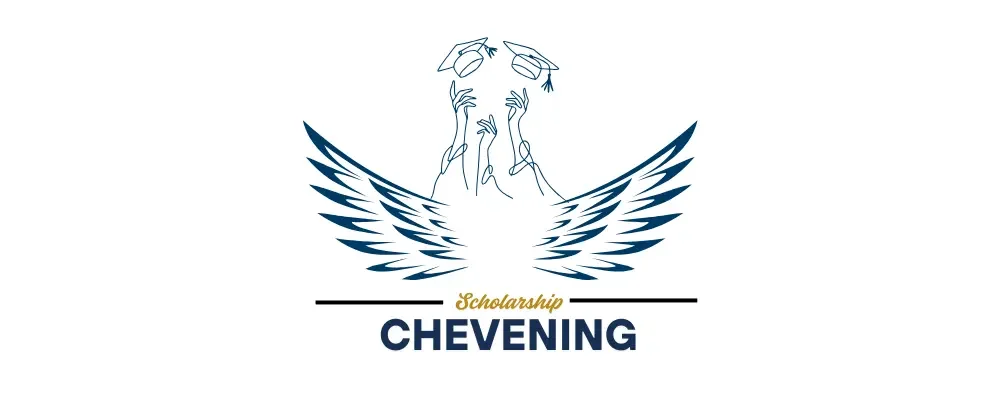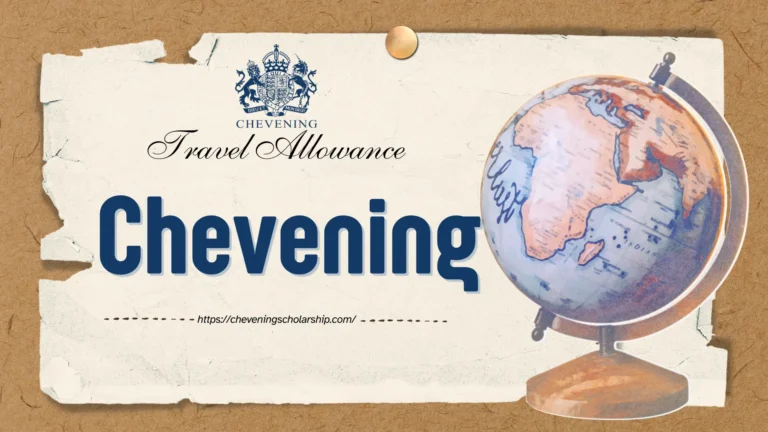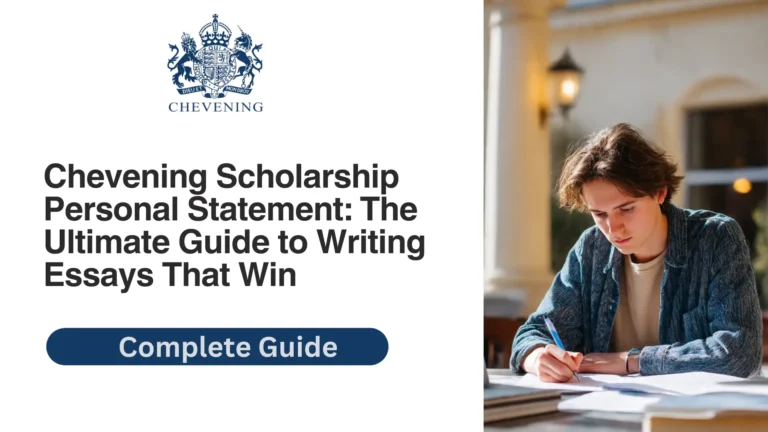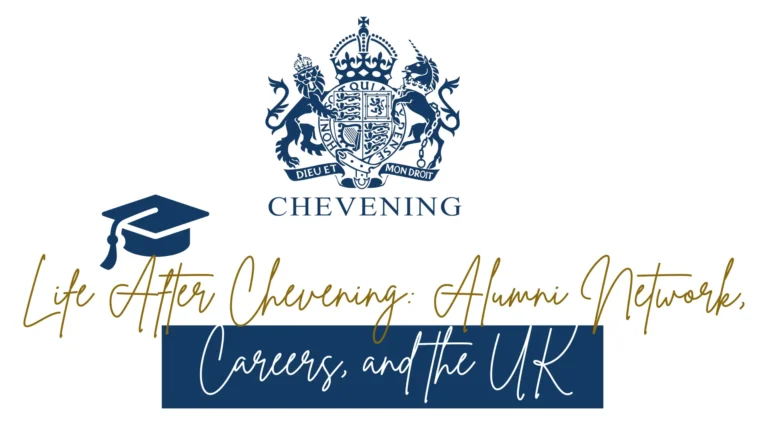How to Get Chevening Scholarship 2025: Your Complete Roadmap to Success (The Strategy That Actually Works)
My friend Miguel spent six months preparing his Chevening application. He researched every university, drafted his essays twenty times, practiced interviews until he could recite answers in his sleep. When the rejection email came, he was gutted.
The following year, he tried again. But this time, something was different. He wasn’t just working harder—he was working smarter. He understood the strategy behind winning Chevening, not just the mechanics of filling out an application.
Second attempt? Full scholarship. He’s now finishing his MSc at Oxford and regularly gets messages from aspiring applicants asking, “What changed?”
That’s exactly what I’m about to show you. Not just what to do, but how to do it in a way that maximizes your chances. Because here’s the truth: how to get Chevening Scholarship isn’t about being perfect—it’s about being strategic, authentic, and prepared.
Let’s break down the entire process, step by step, so you can be one of the roughly 1,500 scholars who win this life-changing opportunity each year.
Step 1: Understand What You’re Really Applying For
Before you write a single word, you need to understand what Chevening actually is and what they’re looking for. This isn’t just a free ride to study in the UK—it’s an investment in future leaders.
What Chevening Covers (And Why It Matters)
Chevening scholarship funding coverage is comprehensive:
- Full tuition fees for your chosen UK university
- Monthly living allowance (stipend)
- Economy class flights to and from the UK
- Additional grants for thesis research, if applicable
- Exclusive access to Chevening events and networking opportunities
But here’s what people miss: they’re not just funding your education. They’re betting on your future impact. Every penny they invest, they expect to see returned in the form of leadership and positive change in your home country.
This fundamentally changes how you approach your application.

The Three Pillars Chevening Actually Cares About
Chevening success stories consistently demonstrate three qualities:
- Leadership potential: Not current titles, but demonstrated ability to influence and inspire
- Networking ability: Building meaningful professional relationships that create value
- Commitment to return home: Genuine plans to apply your UK education domestically
If your application doesn’t speak clearly to all three, you’re starting with a handicap.
Step 2: Verify Your Eligibility (Don’t Skip This)
Let’s talk about Chevening scholarship eligibility because I’ve seen too many people invest weeks into applications they were never qualified for.
The Core Requirements
You MUST have:
✓ Citizenship of a Chevening-eligible country (check the official list) ✓ At least 2 years of work experience (2,800+ hours) ✓ An undergraduate degree that qualifies you for postgraduate study in the UK ✓ Commitment to return to your country of citizenship for at least 2 years ✓ No previous UK government-funded scholarship for UK study.
| Requirement | What Qualifies | What Doesn’t Qualify | How to Verify |
|---|---|---|---|
| Work Experience | Full-time, part-time, internships, volunteering (2,800+ hours) | Academic coursework, unpaid student projects | Calculate total hours across all positions |
| Education | Bachelor’s degree or equivalent recognized by UK universities | Currently pursuing undergraduate degree | Check NARIC or ECCTIS for equivalency |
| Citizenship | Citizen of Chevening-eligible country | Permanent resident or dual citizen of ineligible country | Check official country list annually |
| Return Home | Genuine plan to return for minimum 2 years | Plans to migrate permanently | Articulate clear home country goals |
| English Proficiency | Meet UK university standards (IELTS, TOEFL, etc.) | Assumption of fluency | Check specific university requirements |
The Gray Areas That Trip People Up
“I’m currently studying abroad—am I eligible?” Yes, as long as you meet all other criteria and can demonstrate commitment to return home.
“Can I count my undergraduate research as work experience?” Only if you were employed and paid for that research. Academic credit doesn’t count.
“I have dual citizenship—which country should I apply from?” You can only apply from one Chevening-eligible country. Choose strategically based on where you have stronger ties and clearer return plans.
How to get Chevening scholarship with low GPA: GPA matters for university admission, but Chevening focuses heavily on work experience, leadership, and potential. Strong essays and impressive career trajectory can compensate for academic grades that aren’t stellar.
Step 3: Research Like Your Scholarship Depends On It (Because It Does)
Most applicants do surface-level research. Winners dig deeper.
University and Course Selection Strategy
How to choose university for Chevening isn’t about prestige alone—it’s about strategic fit.
You need to select three UK universities and three courses at each institution (nine choices total). Here’s how winners approach this:
Tier 1: Dream institutions Where you’d genuinely love to study, with specific faculty whose work aligns with your goals.
Tier 2: Strong fit options Excellent programs that match your career plans, perhaps slightly less competitive.
Tier 3: Strategic safety Solid programs where admission is more likely, ensuring you have options.
The research that actually matters:
- Specific faculty members and their recent research
- Course modules and how they fill gaps in your expertise
- Alumni career trajectories from these programs
- Industry connections and placement opportunities
- Why UK specifically for this field (not just “quality education”)
Chevening scholarship courses tips: Choose courses that clearly connect to your stated career goals. If you claim you want to work in environmental policy, don’t apply for marketing programs. Consistency matters.

Understanding the Timeline
Chevening application timeline follows a predictable pattern:
- August: Applications open
- Early November: Application deadline
- December-January: Interview invitations sent
- January-March: Interview period
- May-June: Results announced
- July-August: University applications and unconditional offers
- September-October: Arrival in UK
How to manage Chevening scholarship deadlines: Work backward from the November deadline. Set your personal submission deadline at least two weeks earlier to account for unexpected issues.
Step 4: Master the Four Essays (This Is Where You Win or Lose)
The essays are everything. I’m not exaggerating. Your CV gets you past initial filters, but your essays determine whether you reach interviews.
Essay 1: Leadership and Influence
How to write Chevening essays on leadership comes down to showing, not telling.
What doesn’t work: “I am a natural leader who inspires my team to achieve excellence through effective communication and strategic vision.”
What works: “When our community faced flooding that destroyed 40 homes, I spent three nights coordinating volunteer groups through a WhatsApp network I built, connecting 200+ volunteers with affected families. Within a week, we’d provided emergency supplies to every household and secured temporary accommodation for 15 families through partnerships with local businesses I personally contacted.”
See the difference? Specific situation, concrete actions, measurable impact.
The framework for leadership essays:
- Context: Set the scene with specific details
- Challenge: What obstacle made this difficult?
- Your Role: What YOU did specifically (not your team)
- Strategy: How you approached the problem
- Outcome: Measurable results
- Reflection: What this taught you about leadership
How to gain leadership experience for Chevening if you’re still building your profile: Focus on influencing change without formal authority. Community organizing, advocacy work, mentorship, and cross-departmental initiatives all demonstrate leadership.
Essay 2: Networking
Chevening networking essay tips center on demonstrating value creation through relationships.
Weak networking example: “I have a strong professional network across multiple sectors and regularly attend industry events to expand my connections.”
Strong networking example: “Recognizing that local NGOs and government agencies working on literacy rarely collaborated, I organized quarterly roundtables bringing together 15+ organizations. This network led to three joint funding proposals, with one securing $200,000 for a pilot program combining government infrastructure with NGO implementation expertise.”
Your networking essay should demonstrate:
- How you build relationships strategically
- How your network creates tangible value for others
- Examples of leveraging connections to solve problems
- Plans for expanding your network through Chevening
How to build Chevening network while still applying: Start now. Reach out to alumni, join online communities, attend pre-departure events (if conditional offer holder), and engage meaningfully with the global Chevening community online.
Essay 3: Study in the UK
This essay answers: Why UK? Why these universities? Why these courses? Why now?
Generic answer that fails: “The UK has world-class universities with excellent academic reputation and diverse student body.”
Specific answer that succeeds: “Professor James Richardson at the University of Edinburgh leads research on renewable energy policy in developing nations, directly addressing the challenges I face implementing Pakistan’s Alternative Energy Development Board initiatives. His 2023 paper on regulatory frameworks for emerging markets provides exactly the theoretical foundation I need to strengthen my current policy work. Additionally, Edinburgh’s partnerships with Scottish power companies offer practical case studies in transitioning from fossil fuels—directly applicable to Pakistan’s energy transition goals.”
Notice: Specific professor, specific research, specific connection to your work, specific reason UK excels in this area.
Essay 4: Career Plan
How to write Chevening career plan essay requires balancing ambition with realism.
The three-horizon structure that works:
Short-term (0-2 years post-return): “I will return to my role as Policy Analyst at [specific organization], applying my enhanced skills in [specific area from UK study] to lead [specific initiative] targeting [specific outcome].”
Medium-term (3-5 years): “Having demonstrated impact through [specific short-term achievement], I aim to advance to [realistic next role] where I can scale solutions to [specific scope]. This trajectory aligns with career paths of [specific examples in your sector].”
Long-term (10+ years): “My ultimate goal is [specific leadership position or outcome] that will [measurable impact on specific issue]. This is achievable through [realistic pathway based on sector norms].”
Chevening career plan tips: Avoid vague goals (“improve education in my country”) and unrealistic ones (“become Prime Minister”). The sweet spot is ambitious but grounded in sector reality.
| Time Horizon | Focus | Key Elements | Common Mistakes |
|---|---|---|---|
| Short-term (0-2 years) | Immediate return role and initiatives | Specific position, organization, projects | Being too vague about return plans |
| Medium-term (3-5 years) | Career progression and expanding impact | Realistic advancement, scaling efforts | Jumping too many career levels |
| Long-term (10+ years) | Ultimate leadership vision | Sector-specific goals, measurable impact | Impossibly ambitious or generic |
The Essay Writing Process That Actually Works
How to prepare Chevening scholarship essays:
Week 1-2: Brainstorm and outline
- List all potential examples for each essay
- Choose the strongest, most specific ones
- Create detailed outlines
Week 3-4: First drafts
- Write without self-editing
- Focus on getting stories down
- Don’t worry about word count yet
Week 5-6: Revision
- Cut ruthlessly—every sentence must add value
- Ensure each essay has specific examples and numbers
- Check that you’ve actually answered the question
Week 7: External feedback
- Share with trusted advisors
- Preferably someone who won a competitive scholarship
- Address all substantive feedback
Week 8: Final polish
- Grammar, formatting, consistency
- Read aloud to catch awkward phrasing
- Stay 10% under word limit
Chevening scholarship essay dos and don’ts:
DO:
- Use specific examples with concrete details
- Quantify achievements wherever possible
- Show growth and learning
- Connect everything to your career goals
- Write in your authentic voice
DON’T:
- Make generic claims without evidence
- Exceed word limits (even by a little)
- Repeat information from your CV
- Use overly formal or complex language
- Submit without multiple rounds of revision
Step 5: Secure Strong References (They Matter More Than You Think)
Chevening recommendation letter tips start with choosing the right referees.
Who Should Write Your References
Best options:
- Direct supervisors who know your work intimately
- Professors who supervised significant research/projects
- Mentors who can speak to your leadership and potential
Avoid:
- Family friends, even if they have impressive titles
- People who barely know you but have big names
- Anyone who can’t provide specific examples
How to write Chevening scholarship references (helping your referees):
While you shouldn’t write the reference yourself, you can make their job easier by providing:
- Your CV and application essays
- Specific projects/achievements you hope they’ll mention
- The evaluation criteria Chevening uses
- Key dates and submission instructions
The conversation to have: “I’m applying for Chevening, which focuses heavily on leadership potential and networking ability. Would you feel comfortable writing a reference that addresses [specific project] where I demonstrated these qualities? I’d be happy to provide materials to support your writing.”
Give referees at least 6 weeks’ notice and follow up politely if deadlines approach.
Step 6: Navigate the Interview Like a Pro
Congratulations—you’ve made it to interviews! This means you’re in roughly the top 20-30% of applicants. Now comes the real test.
How to Prepare for Chevening Interview
Chevening scholarship interview preparation tips focus on three areas:
1. Know your application intimately
The panel has read your essays. Expect them to dig deeper into every claim you made. If you wrote about leading a project, they might ask:
- “What was the biggest challenge you faced?”
- “How did you handle disagreements within your team?”
- “What would you do differently now?”
2. Stay current on your field and country
Chevening interview questions regularly touch on current affairs in your country and sector. Not memorizing dates, but understanding trends and implications.
Recent interview questions have included:
- “What’s the biggest challenge facing [your sector] in [your country]?”
- “How has [recent event] impacted your work?”
- “What policy changes would you advocate for in your role?”
3. Articulate the Chevening return
This is critical. They need to believe you’ll actually go home and create impact.
Be prepared to discuss:
- Specific ways you’ll apply your UK learning
- Networks you’ll activate upon return
- Obstacles you anticipate and how you’ll overcome them
- How Chevening alumni network will support your goals

The Interview Strategies Winners Use
How to answer Chevening interview questions:
Strategy 1: The STAR Method
- Situation: Set the context
- Task: Your specific responsibility
- Action: What you did
- Result: Measurable outcome
Strategy 2: Bridge to Your Strengths If asked a difficult question, acknowledge it honestly then redirect to related strengths.
Example: “That’s an excellent question. While I haven’t directly worked on [specific area], my experience with [related area] has taught me [relevant skill], which I believe applies to this challenge.”
Strategy 3: Demonstrate Self-Awareness Don’t pretend to be perfect. Acknowledge challenges and show how you’ve grown.
Chevening scholarship interview panel typically includes:
- British Embassy/High Commission staff
- Local Chevening alumni
- Sometimes sector experts or academics
They’re evaluating not just your answers but your demeanor, authenticity, and potential.
Common Interview Pitfalls
Pitfall 1: Memorized, robotic answers Fix: Prepare talking points, not scripts. Practice the ideas, not exact words.
Pitfall 2: Failing to ask questions at the end Fix: Prepare 2-3 thoughtful questions about the program, alumni network, or return home support.
Pitfall 3: Negativity about your country Fix: Acknowledge challenges honestly but focus on your commitment to solutions.
Pitfall 4: Unclear return plans Fix: Have specific examples of what you’ll do, who you’ll work with, and how you’ll measure impact.
Step 7: The Post-Interview Phase (It’s Not Over Yet)
If you receive a conditional offer, congratulations! But your work isn’t done.
Securing University Admission
How to get unconditional offer for Chevening:
You need admission to one of your chosen UK universities before the deadline (typically mid-July). This means:
January-February: Apply to universities immediately after conditional Chevening offer March-May: Follow up on applications, respond to university requests June-July: Secure at least one unconditional offer and upload to Chevening portal
Chevening required documents for university applications typically include:
- Degree certificates and transcripts
- English language test scores (IELTS, TOEFL, etc.)
- Personal statement (often similar to Chevening essays)
- References (may be same as Chevening referees)
- CV/Resume
Don’t wait until the last minute. Universities have rolling admissions and popular programs fill up quickly.
Understanding What Comes Next
How to get Chevening scholarship acceptance letter:
Once you upload your unconditional university offer by the deadline, Chevening reviews and confirms your final acceptance. You’ll then receive:
- Official Chevening acceptance letter
- Pre-departure briefing invitation
- Visa application guidance
- Initial living allowance information
Chevening scholarship acceptance tips:
- Respond to all communications promptly
- Attend pre-departure events
- Join your cohort’s WhatsApp/Facebook groups
- Start visa application early (it can take 3-8 weeks)
Step 8: Learn from Those Who’ve Done It
Chevening scholarship tips from winners consistently emphasize similar themes:
Success Story #1: The Career Changer
Aisha worked in corporate banking but wanted to transition to climate finance. Her Chevening application didn’t hide this shift—it embraced it. She showed how her banking experience positioned her uniquely to understand green financing mechanisms, and how UK study would provide the environmental policy expertise she lacked.
Result: Full scholarship. Now leading a climate finance initiative at a major development bank.
Lesson: Career changes aren’t weaknesses if you can articulate why they make strategic sense.
Success Story #2: The “Average” Candidate
Javier had good (not exceptional) grades, worked at a mid-sized NGO (not a prestigious international organization), and came from a university most panelists had never heard of.
His strength? Incredible specificity in his essays and absolute clarity about his return plans. He knew exactly which policy gaps his UK study would fill, which networks he’d leverage, and how he’d measure success.
Result: Beat out candidates with flashier credentials.
Lesson: Strategic clarity beats impressive titles.
Success Story #3: The Second-Time Winner
Remember Miguel from the introduction? Here’s what he changed:
First application:
- Generic leadership examples
- Vague career goals
- Chose prestigious universities without deep research
Second application:
- Hyper-specific leadership stories with numbers
- Detailed career progression plan with realistic milestones
- Chose universities based on specific faculty research alignment
Result: Complete transformation of application quality.
Lesson: It’s not about working harder—it’s about working smarter.
| Element | Weak Application | Strong Application |
|---|---|---|
| Leadership Examples | “Led team to success” | “Coordinated 15-person task force that reduced processing time by 40%, saving 200 hours monthly” |
| Career Goals | “Work in education sector” | “Return to Ministry of Education as Senior Policy Advisor, leading national digital literacy initiative targeting rural schools” |
| University Choice | “Oxford has excellent reputation” | “Professor Chen’s research on EdTech in emerging markets directly addresses challenges I face implementing Pakistan’s digital education strategy” |
| Networking | “I have strong network” | “Built multi-sector coalition of 12 organizations that secured $150K in joint funding” |
How to Increase Chances of Getting Chevening: The Real Success Factors
Let’s get tactical. How to increase chances of getting Chevening comes down to:
Factor 1: Start Early
Applications that win typically start 4-6 months before deadline. This allows time for:
- Deep research
- Multiple essay drafts
- Securing strong references
- Gathering documents
- Getting feedback
How to prepare application for Chevening scholarship on an accelerated timeline:
If you’re starting late, prioritize:
- Essays (this is where you win or lose)
- University research (must be specific and genuine)
- References (quality over speed)
Factor 2: Be Ruthlessly Specific
Every vague claim is a missed opportunity. Compare:
Vague: “I will use my education to improve healthcare in my country.”
Specific: “I will return to my role at the Ministry of Health, applying health economics training from my LSE course to redesign our rural health financing model, with pilot launch planned for Q3 2026 in three underserved provinces.”
Factor 3: Show, Don’t Tell
Never make claims without evidence:
❌ “I am an effective leader” ✅ “I led a cross-functional team of 12 people from 4 departments to launch our first digital product, completed 3 weeks ahead of schedule and 15% under budget”
❌ “I have strong networking skills” ✅ “I built relationships with 20+ local business owners, resulting in $50,000 in private sector sponsorship for our youth employment program”
Factor 4: Demonstrate Self-Awareness
Acknowledge challenges and show growth:
“My first attempt at launching a community initiative failed because I didn’t adequately engage stakeholders early in the planning process. This taught me that sustainable change requires building consensus from the beginning, not announcing solutions from the top. In my subsequent project, I spent three months conducting consultations before finalizing any plans, resulting in 90% community participation versus 30% in my first attempt.”
This honesty makes you more credible, not less.
Factor 5: Align Everything
Your CV, essays, career plan, and interview answers must tell one coherent story. Any inconsistency raises red flags.
If your CV shows marketing experience but your essays discuss education work and your career plan targets healthcare, you look confused about your goals.
Common Questions: Your Chevening FAQ
Q: Can I apply if I’m currently pursuing my undergraduate degree? A: No. You must have completed your bachelor’s degree before applying.
Q: How many times can I apply? A: There’s no limit, but address weaknesses from previous attempts.
Q: Do I need IELTS before applying? A: Not for the initial Chevening application, but you’ll need it for university admission later.
Q: Can I work while on Chevening? A: Limited part-time work is allowed (typically up to 20 hours/week during term), but the scholarship is designed to be your primary support.
Q: What if I don’t have exactly 2 years work experience yet? A: You need 2,800 hours minimum, which can be accumulated through various positions over time. Calculate carefully.
Q: Can I change my university choices after applying? A: Not after submission deadline. Choose carefully.
Q: How to get Chevening scholarship after graduation if I’ve been out of school for several years? A: Actually beneficial—Chevening values work experience. Focus on demonstrating how your career has evolved and why this specific UK study fits your trajectory now.
Q: How to get Chevening scholarship after masters? A: Yes, you can apply even if you already have a master’s degree, as long as you meet all other eligibility criteria and haven’t previously studied in the UK on a UK government scholarship.
Your Action Plan: What to Do Right Now
Enough theory. Here’s your implementation strategy:
Today (Next 2 Hours)
- Verify your eligibility using official Chevening criteria
- Calculate your exact work experience hours
- Create a dedicated folder for all Chevening materials
- Set submission deadline reminder (2 weeks before official deadline)
- List potential referees with contact information
This Week
- Research 10-15 UK universities and specific programs
- Identify faculty whose research aligns with your goals
- Draft rough outlines for all four essays
- Contact potential referees to gauge interest
- Join Chevening applicant communities online
This Month
- Complete first drafts of all essays
- Conduct deep research on chosen universities
- Formally request references from chosen referees
- Gather all required documents
- Schedule weekly work sessions for application
Ongoing Until Submission
- Revise essays based on feedback (minimum 3 rounds)
- Practice articulating your story verbally
- Stay current on developments in your field and country
- Refine career plans and return strategy
- Review and polish everything one final time

The Mindset That Wins
How to get Chevening scholarship ultimately comes down to more than tactics—it requires the right mindset.
You’re Not Begging for an Opportunity
You’re proposing a partnership. Chevening invests in you; you deliver impact in your country. Approach your application with confidence, not desperation.
Rejection Isn’t Personal
With 70,000+ applicants for ~1,500 spots, exceptional candidates get rejected every year. If you don’t win this cycle, learn, improve, and try again.
Authenticity Beats Perfection
The strongest applications come from people being genuinely themselves, not trying to become what they think Chevening wants.
The Long Game Matters
Even if you don’t win Chevening, the process of clarifying your goals, articulating your vision, and building your network has inherent value.
Final Thoughts: You Can Do This
Look, I’m not going to sugarcoat it—winning Chevening is competitive. Really competitive. But thousands of people just like you successfully navigate this process every year.
They’re not superhuman. They’re not all from elite backgrounds. They don’t all have perfect credentials.
What they have is:
- Clear vision for their impact
- Strategic approach to their application
- Willingness to revise and improve
- Authentic commitment to their goals
You’ve got this far in this guide, which tells me you’re serious about this opportunity. Now it’s about execution.
The difference between dreamers and scholars is simple: scholars do the work.
So close this article. Open that Word document. Start drafting that first essay.
Your future self—the one walking through the gates of a UK university with a Chevening scholarship in hand—is counting on you to begin today.
Important Note: Application requirements and processes occasionally change. Always verify current information on the official Chevening website (www.chevening.org). This guide provides strategic advice based on successful applications, but official sources have final authority on technical requirements.







